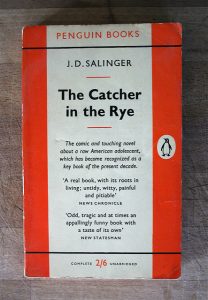Researching
52 Synthesizing

To synthesize is to combine ideas and create a completely new idea. That new idea becomes the conclusion you have drawn from your reading. This is the true beauty of reading: it causes us to weigh ideas, to compare, judge, think, and explore—and then to arrive at a moment that we hadn’t known before. We begin with simple summary, work through analysis, evaluate using critique, and then move on to synthesis.
For example, many people read J.D. Salinger’s The Catcher in the Rye at some point during their lives, often during high school. The book focuses on an angsty, rebellious teen who relates aspects of his teenage experiences; he does this from his room in a mental institution. In the end, the teen understands more about himself and the world, and he begins to consider his possible future.
Many teens read this story and see themselves in it; grappling with the ideas in the text helps them better understand themselves and often encourages them to reach for their own futures. This is an example of how they draw their own conclusions from the text and synthesize their own directions and ideas.
Most of us can point to one or two books that have been life-changing—books that have held us captive for a moment in time and shaped our outlook. These are moments of synthesis. If this hasn’t happened to you yet, grab a good book (ask a teacher or librarian if you need suggestions), pour a cup of tea, and start reading.
Text Attributions
- This chapter was adapted from “Drawing Conclusions, Synthesizing, and Reflecting” in The Word on College Reading and Writing by Carol Burnell, Jaime Wood, Monique Babin, Susan Pesznecker, and Nicole Rosevear, which is licensed under a CC BY-NC 4.0 Licence. Adapted by Allison Kilgannon.
Media Attributions
- “J.D. Salinger’s Catcher in the Rye photo” by Andy Field is licensed under CC BY-NC-SA 2.0 Licence.

